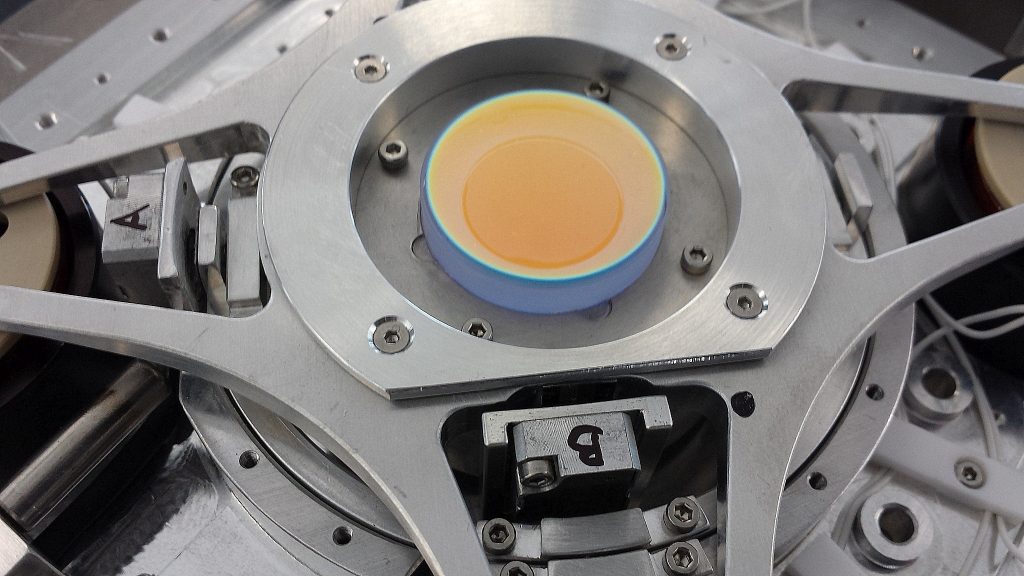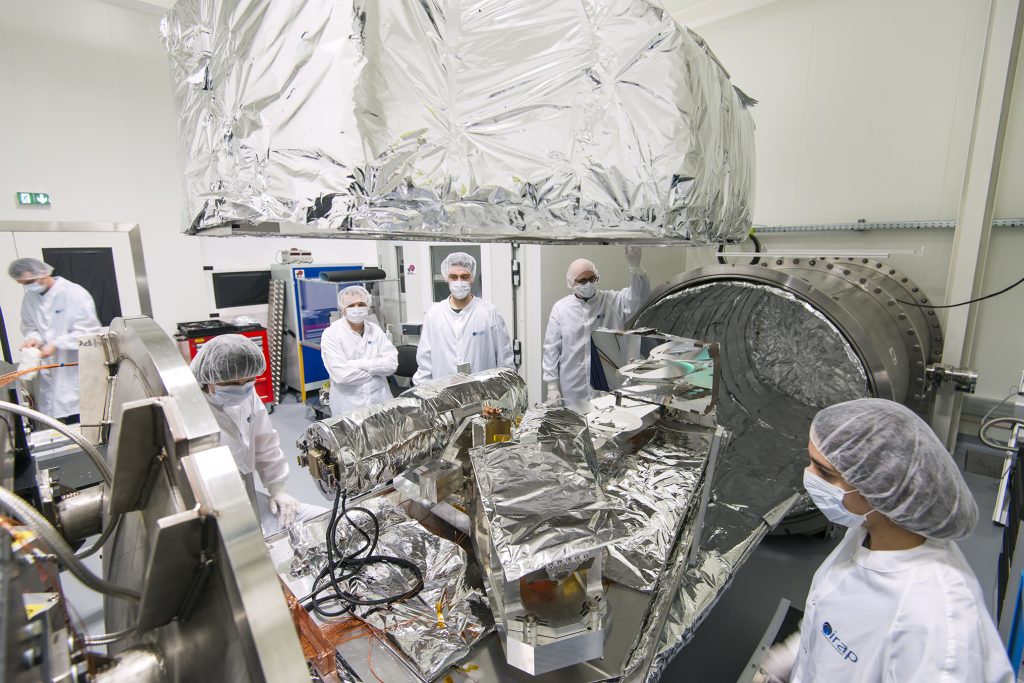2017 November: SPIRou performances validated
SPIRou completes final acceptance tests at IRAP / OMP
Since July 2017, SPIRou as a whole, including its cryogenic spectrograph, its Cassegrain module and its calibration unit, was busy 24/7 carrying out a very extensive testing programme at IRAP/OMP in Toulouse.

The goal was to demonstrate that the instrument performances were on par with predictions, and that SPIRou will be able to deliver top quality science data in terms of spectroscopic, velocimetric, and polarimetric precision, and with the best possible level of efficiency for this kind of instrument.
Following cryogenic cycle #3, the spectrograph was opened to further optimize its thermal stability and improve its absolute velocimetric precision. For instance, the grating and detector electronics were wrapped with additional multi-layer insulation (MLI) to ensure that the heat generated by reading-out the detector was not destabilizing the whole thermal equilibrium and inducing velocimetric perturbations. This fix resulted in an improved overall thermal stability of the instrument, with temperature fluctuations of order 0.3 mK rms on timescales of several tens of hours. Thanks to these changes, SPIRou demonstrated remarkable velocimetric stability down to a precision of 0.25 m/s rms on timescales of 24 hours, 4 times better than the requirement.
Another major improvement came from using the Image Stabilization Unit (ISU), which demonstrated its full performances during these tests. For this programme SPIRou was equipped with an advanced light-injection bench referred to as the ‘artificial star’ and capable of simulating perturbations like atmospheric agitation and dispersion. Thanks to its ISU, SPIRou was shown to be able to stabilize the artificial star with respect to the instrument entrance aperture to within 0.7 µm, 100 times better than the atmosphere-like image motion that the artificial star exhibited without ISU correction. By suppressing image motion at the entrance of the instrument and its polluting impact on velocimetric measurements, SPIRou will reach optimal sensitivity to Earth-like planets around nearby red dwarfs.
Last but not least, SPIRou was demonstrated to have a peak efficiency of 15% – a performance that only very few high-resolution spectrographs and even fewer high-precision velocimeters worldwide are currently capable of reaching. Altogether, this will ensure that SPIRou will become the best instrument of its kind at near-infrared wavelengths once installed atop the dormant Maunakea volcano in the big island of Hawaii – by far the best observing site worldwide.
SPIRou acceptance tests were carried out by a whole team of scientists and engineers from all SPIRou partners, under the overall supervision at IRAP / OMP of Andres Carmona and Jean-Francois Donati on the science side, and Sébastien Baratchart on the engineering side.
The SPIRou Image Stabilisation Unit (ISU) in action at 50Hz:
the left panel shows the image of the artificial star kept well centered on the instrument entrance aperture while the star itself is moving randomly by as much as 0.5’’ rms over the exposure, whereas the right panel shows the ISU correction needed to maintain the artificial star well centered (green ‘+’ signs for the 50 most recent corrections over the last second). Sudden image shifts occurring every minute (at t=41s in this movie) simulate the decentering effect of the wind, which the ISU is found to correct well. In average over the whole exposure the image of the artificial star is found to be centered on the hole down to a precision of 0.005″ to 0.01″ rms, 5 to 10 times better than the technical requirement. (©S.Baratchart – IRAP/OMP)



